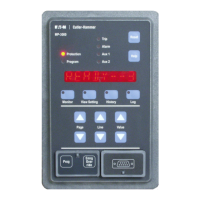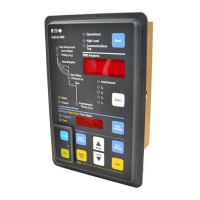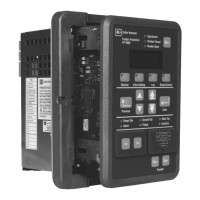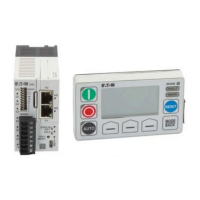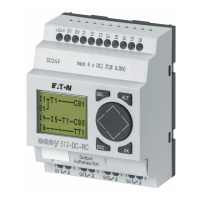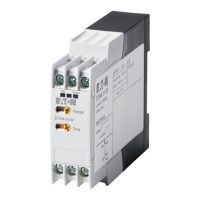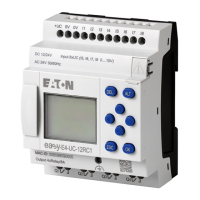I.B. 17555C
Effective November 1999
Page 16
Note: Digitrip 3000 Protective Relays are shipped
with a phase zone interlocking jumper (across
terminals TB 1-13 and 14) and a ground zone
interlocking jumper (across terminals TB 1-11 and
12). For phase or ground zone capability, the
respective jumpers must be removed.
Terminal Block Two (TB2): TB2 is located on the right
side of the rear panel and is numbered 1 through 15.
Terminals 1 and 2 are used for the internal INCOM com-
munications interface.
Terminal 3 can be used for an INCOM shield tie point. It is
not connected to ground or any electrical circuit in the
Digitrip 3000.
Terminals 4 and 5 are a N.O. contact from the Communi-
cations Close output relay that can be configured two dif-
ferent ways:
1.) When Dip Switch S5 is in the “On” position, this out-
put relay is programmed to close when the High Load
timer times out.
2.) When Dip Switch S5 is in the “Off” position the Com-
munications Close Relay can be energized via a spe-
cific communications message sent over the INCOM
port.
Terminals 6, 7 and 8 are Form “C” contacts on the trip
alarm relay and change state whenever any protective
trip is initiated by the relay. They do not change state
when the master computer initiates an opening of the cir-
cuit breaker via the communication interface. After a pro-
tective trip, the contacts remain in the changed state until
the “Reset” Pushbutton is depressed, whether the relay is
in the Manual Reset Mode or the Auto Reset Mode. For
additional details about Manual and Auto Reset Modes,
refer to specific paragraphs earlier in this section.
Terminals 9,10 and 11 are Form “C” contacts on the pro-
tection off alarm relay. The contacts change state when
nominal control power is applied to the relay and no inter-
nal errors are detected.
Terminals 12 and 13 are a “NO” configurable contact. DIP
Switch S3 is used to configure the trip contacts. With DIP
Switch S3 in the “OFF” position, this contact closes when
the relay detects a need for the circuit breaker to trip due
to either a phase or ground instantaneous fault or the dis-
criminator function. With DIP Switch S3 in the “ON” posi-
tion, this contact closes when the relay detects a need for
the circuit breaker to trip due to any type of ground fault.
Terminals 14 and 15 are also a “NO” configurable con-
tact. With DIP Switch S3 in the “OFF” position, this con-
tact closes when the relay detects a need for the circuit
breaker to trip due to an inverse time overcurrent or short
time function. The contact also operates when the com-
munication interface initiates an action to open the circuit
breaker. With DIP Switch S3 in the “ON” position, this
contact closes when the relay detects a need for the cir-
cuit breaker to trip due to any type of phase fault or com-
munications.
Rear Surface Terminals: The rear surface terminals,
identified as (A1, A2), (B1, B2), (C1, C2) and (G1, G2)
provide the current transformer input connection points
and are rated for 5 ampere inputs. (A1, A2), (B1, B2) and
(C1, C2) are phase A,B,C current inputs respectively,
while (G1, G2) is the ground current input.
2-2.3 EXTERNAL HARDWARE
The Digitrip 3000 Protective Relay requires that a cus-
tomer supplied source of input control power be wired
into the TB1 terminal block located on the rear panel.
Refer to the typical wiring diagram in Figure 3-1. A power
supply can be either AC or DC voltage within the accept-
able voltage ranges outlined in Paragraph 2-3 entitled
“UL Testing and Specification Summary.”

